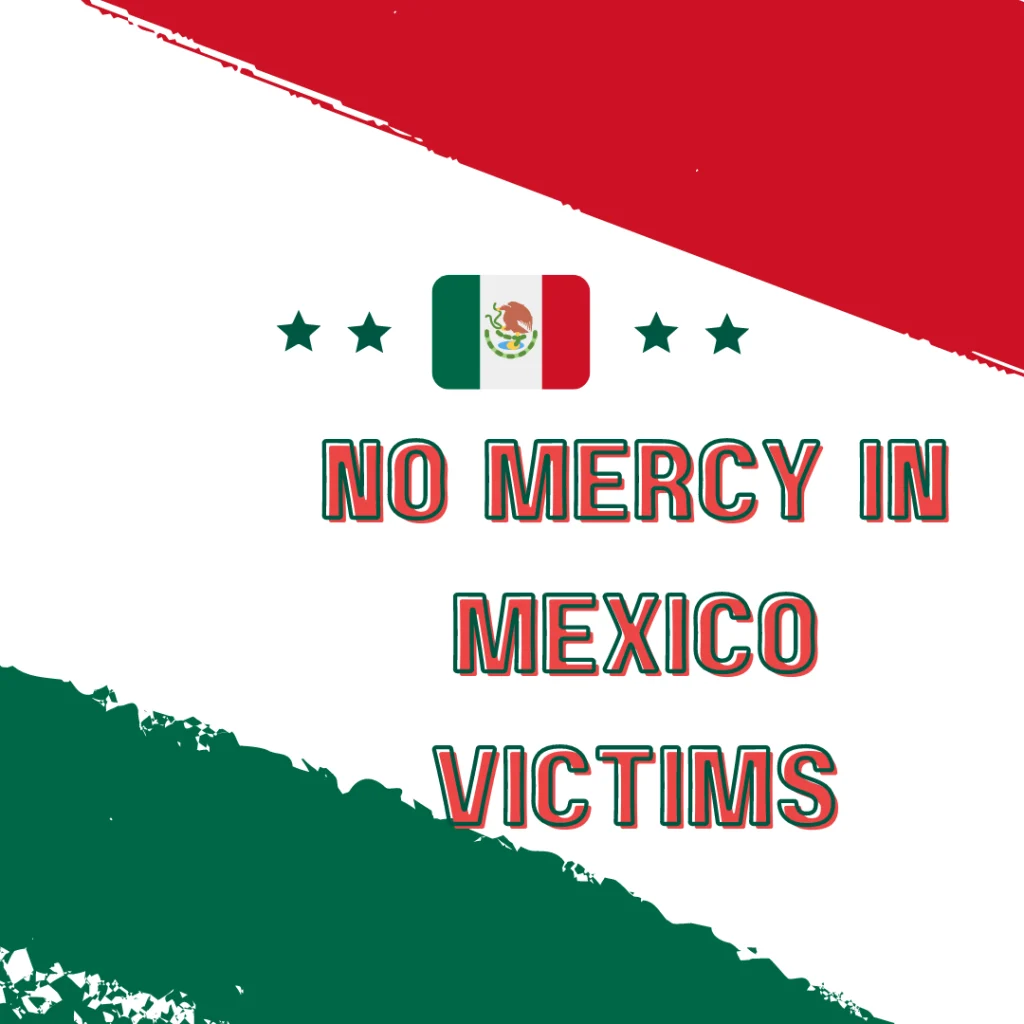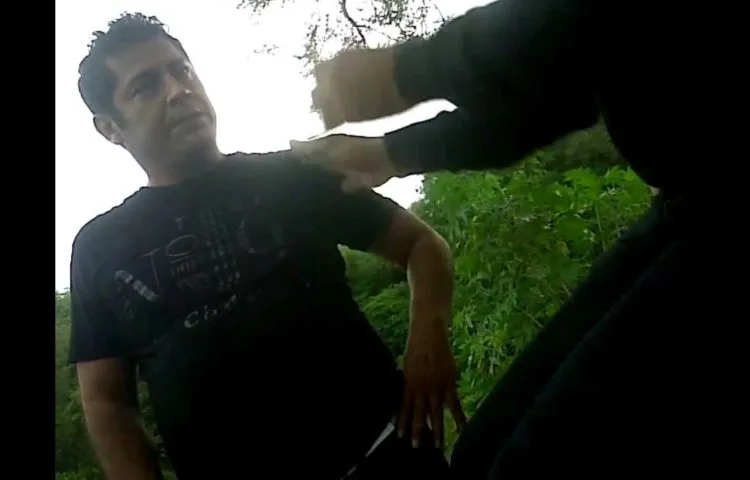The “No Mercy in Mexico” incident, a harrowing act of violence that shocked the world, left a lasting impact on those involved and those who witnessed it. Behind the gruesome footage lies the tragic stories of the victims, whose lives were cut short in a brutal and senseless manner. This article seeks to shed light on the victims of the “No Mercy in Mexico” incident, exploring their backgrounds, the circumstances surrounding their deaths, and the broader implications of their tragic fate.

The Victims: The victims of the “No Mercy in Mexico” incident were two individuals, believed to be a father and his son, whose identities have been withheld out of respect for their privacy and the dignity of their memory. While limited information is available about the victims, it is clear that they were ordinary people caught in the crosshairs of Mexico’s deadly drug war, their lives tragically cut short by the ruthless actions of a criminal cartel.
In the realm of Mexican cartels, reactions to a victim sobbing and begging for mercy are often characterized by brutality and indifference. While my understanding is primarily based on information gleaned from internet sources like Univision News and depictions in movies, it is widely believed that members of these cartels exhibit little to no compassion or remorse towards their victims.
From what I’ve gathered, Mexican cartels are notorious for their ruthlessness and lack of empathy. They operate within a culture of violence and intimidation, where showing weakness or vulnerability is often met with further aggression. Victims who plead for mercy are unlikely to receive any reprieve from their tormentors, as the primary goal of the cartel members is often to assert dominance and instill fear.
Religious beliefs within the cartel vary, with some members adhering to practices associated with “La Santa Muerte,” or Holy Death. This figure is sometimes revered as a patron saint by cartel members, with rituals such as lighting votive candles and offering prayers. However, it’s important to note that these practices are considered sacrilegious by mainstream religious institutions, such as the Catholic Church, and are not recognized as legitimate forms of worship.
While movies may sensationalize the behavior of cartel members for dramatic effect, there is often a kernel of truth to their portrayals. These depictions serve to underscore the extreme violence and brutality that characterize the world of Mexican cartels, catering to audiences who seek thrills and excitement from such narratives.
In conclusion, the reaction of Mexican cartels to a victim sobbing and begging for mercy is typically one of callousness and brutality. While my understanding is based on media representations and cultural narratives, the pervasive nature of cartel violence suggests that compassion and empathy are rare commodities in their world.
The Mexican cartels are infamous for their extreme brutality and violence, often being involved in illicit activities such as drug trafficking, kidnapping, extortion, and murder. Their reputation for showing no mercy is well-known, and their actions often reflect this ruthless nature.
When it comes to how Mexican cartels react to a victim sobbing and begging for mercy, there is no singular response. Each cartel and even individual members within those cartels may react differently based on various factors such as their own personal beliefs, the situation at hand, and the specific instructions they have received.
While some cartel members may be swayed by a victim’s pleas and choose to spare their life, others may view such displays of weakness with contempt and respond with further violence. The lack of a unified code of conduct among different cartels means that reactions to such situations can vary widely.
However, it’s important to emphasize that overall, Mexican cartels are not known for their mercy. Their primary motivations often revolve around instilling fear and maintaining control, rather than showing compassion or empathy. Victims who find themselves in such dire circumstances are at a significant disadvantage, as the cartels are more likely to respond with further brutality rather than leniency.
In the event that individuals encounter situations involving Mexican cartels, it’s crucial to prioritize safety and take precautions to minimize risks. Being aware of one’s surroundings, avoiding traveling alone at night, and refraining from engaging in illicit activities are all important steps to reduce the likelihood of encountering cartel-related threats.
Furthermore, it’s imperative to remain calm and composed in the face of danger, avoiding any actions or behaviors that could further escalate the situation. Attempting to find a way to escape or seeking assistance from authorities should be prioritized, as confronting cartel members directly can be extremely perilous.
Ultimately, navigating areas where Mexican cartels operate requires vigilance, caution, and an understanding of the potential dangers involved. By remaining informed and taking proactive measures to ensure personal safety, individuals can better protect themselves from the threats posed by these criminal organizations.
The individuals involved in Mexican cartels often exhibit traits of psychopathy and desensitization to violence, leading them to view others as mere objects rather than fellow humans. This dehumanization process is common in armed conflicts, where soldiers often adopt derogatory terms for the enemy to distance themselves emotionally from their actions.
The culture of impunity within the judicial system further reinforces the sense of invincibility among cartel members, as they believe they can commit heinous crimes without facing consequences. Additionally, the glorification of cartel activities in narcocorridos (drug ballads) and popular culture contributes to their distorted sense of pride and validation.
Many cartel members come from backgrounds marked by drug abuse and mental illness, which may predispose them to engage in violent behavior. However, indoctrination tactics and fear-based strategies perpetuate a hyper-violent lifestyle, where individuals compete to display their ruthlessness.
Violence becomes ingrained in every aspect of cartel members’ lives, including their religious practices and cultural influences. The cult-like adoration of idols and rituals, along with the glamorization of violence in media, further reinforces their violent tendencies.
Personal accounts, such as the testimony of a former cartel member, shed light on the brutal reality of cartel operations. This individual recounts how killing became addictive and even enjoyable, with a preference for inflicting slow and agonizing deaths. Over time, the thrill of violence diminishes, leading to more expedient methods of disposal.
Despite the shocking nature of these revelations, they underscore the deeply ingrained cruelty and depravity within certain individuals involved in cartel activities. The normalization of such atrocities within cartel culture reflects a disturbing aspect of society where human life holds little value.
In conclusion, the actions and mindset of individuals within Mexican cartels are shaped by a complex interplay of factors, including psychopathy, desensitization to violence, cultural influences, and personal experiences. Understanding these dynamics is crucial for addressing the root causes of cartel-related violence and developing effective strategies for intervention and prevention.
Background and Circumstances: The background of the victims remains shrouded in mystery, with little information available about their lives prior to the incident. It is believed that they were targeted by members of a drug cartel in Mexico, possibly due to allegations of betrayal or collaboration with a rival group. However, the veracity of these claims remains uncertain, and the true motivations behind the victims’ deaths may never be fully known.
The Incident: The “No Mercy in Mexico” incident unfolded in a remote location in Mexico, where the victims were subjected to a horrific ordeal at the hands of their captors. The graphic footage of the incident, which circulated on social media platforms like TikTok and Vimeo, depicted the victims being bound, beaten, tortured, and ultimately murdered in a gruesome manner. The brutality of the crime sent shockwaves around the world, prompting widespread condemnation and calls for justice.
Impact and Aftermath: The impact of the “No Mercy in Mexico” incident extends far beyond the victims themselves, leaving a lasting imprint on their families, communities, and society as a whole. The families of the victims were left grappling with unimaginable grief and trauma, their lives forever altered by the senseless loss of their loved ones. Meanwhile, the incident served as a stark reminder of the pervasive violence and lawlessness that continues to plague Mexico, raising urgent questions about the country’s ongoing struggle with organized crime and impunity.
Broader Implications: The “No Mercy in Mexico” incident highlights broader issues related to violence, justice, and human rights in Mexico and beyond. It underscores the need for concerted efforts to address the root causes of violence and insecurity, including poverty, corruption, and institutional weaknesses. Additionally, it underscores the importance of holding perpetrators of violence accountable for their actions and ensuring that victims and their families receive the support and justice they deserve.
Conclusion: The victims of the “No Mercy in Mexico” incident were ordinary people whose lives were tragically cut short by an act of unspeakable violence. As we reflect on their stories and the broader implications of their fate, let us not forget the human cost of Mexico’s ongoing struggle with organized crime and impunity. May their memories serve as a reminder of the urgent need for justice, accountability, and lasting change in Mexico and beyond.
About The Author

